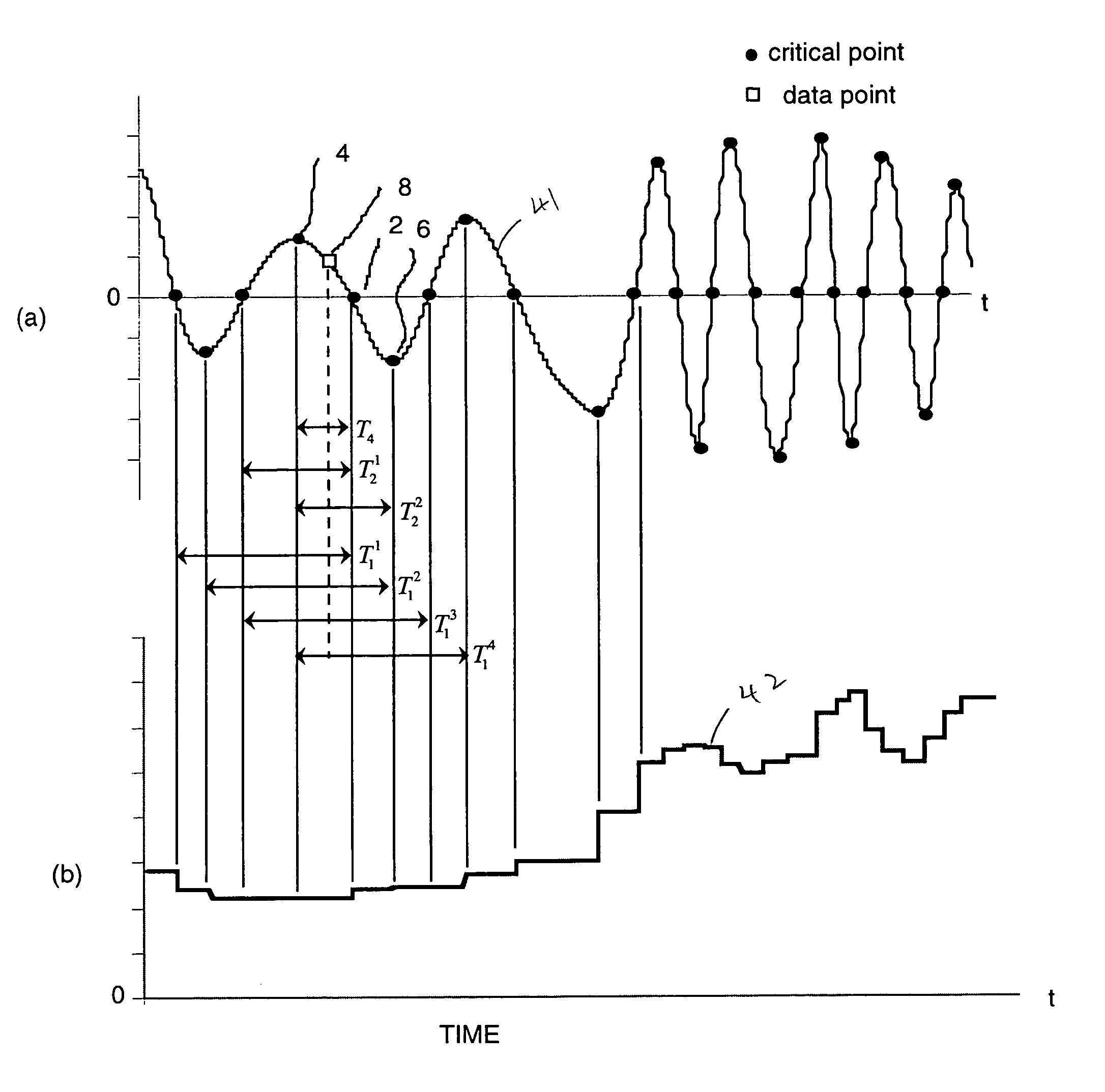Computing frequency by using generalized zero-crossing applied to intrinsic mode functions
a generalized zero-crossing and intrinsic mode function technology, applied in the field of computing frequency by using generalized zero-crossing applied to intrinsic mode functions, can solve the problems of overshoot/undershoot problems, divergence of imf's, and inability to intuitively understand the results
- Summary
- Abstract
- Description
- Claims
- Application Information
AI Technical Summary
Problems solved by technology
Method used
Image
Examples
Embodiment Construction
[0015]FIG. 1(a) illustrates the overall inventive method of extracting IMFs via EMD including the Sifting Process in steps 220 through 270. First, the signal can be inputted in step 100.
[0016]After inputting the signal in step 100, the analog signal is converted to the digital domain suitable for computer processing in the A / D conversion step 105. Depending upon whether the input signal is analog or digital step 105 may be bypassed. Thereafter, the Sifting Process (steps 107 through 270) is applied to Sift the signal with the Empirical Mode Decomposition method and thereby extract the intrinsic mode function(s).
[0017]The signal from step 100 is first windowed by framing the end points in step 107. Then, the Sifting Process begins at step 200 by identifying local maximum values of the digitized, framed physical signal from step 107.
[0018]Then, the method constructs an upper envelope 20 of the signal 10 in step 210. The upper envelope 20 is shown in FIG. 2 using a dot-dashed line. Thi...
PUM
 Login to View More
Login to View More Abstract
Description
Claims
Application Information
 Login to View More
Login to View More - R&D
- Intellectual Property
- Life Sciences
- Materials
- Tech Scout
- Unparalleled Data Quality
- Higher Quality Content
- 60% Fewer Hallucinations
Browse by: Latest US Patents, China's latest patents, Technical Efficacy Thesaurus, Application Domain, Technology Topic, Popular Technical Reports.
© 2025 PatSnap. All rights reserved.Legal|Privacy policy|Modern Slavery Act Transparency Statement|Sitemap|About US| Contact US: help@patsnap.com



